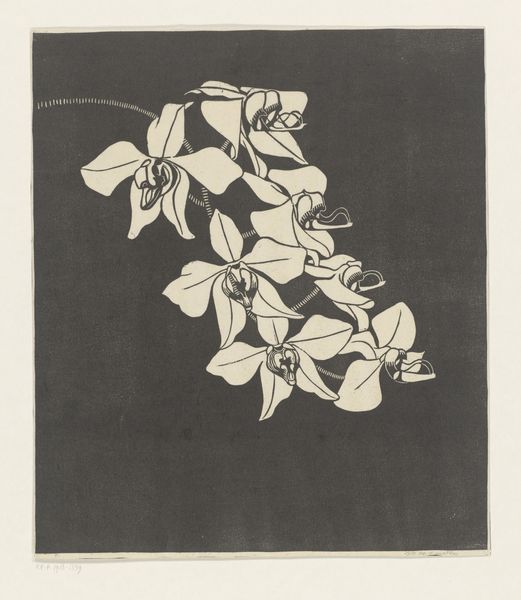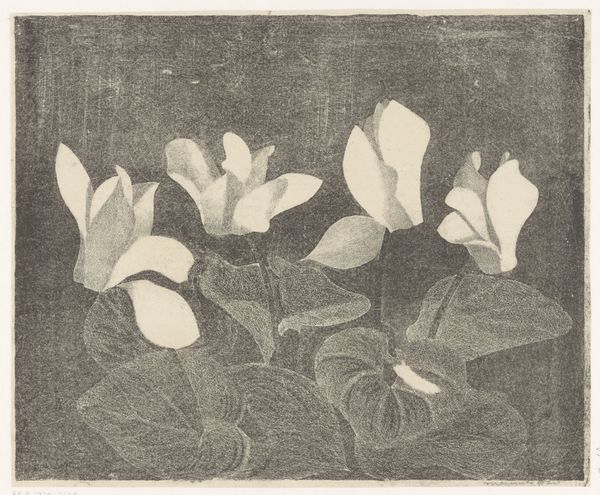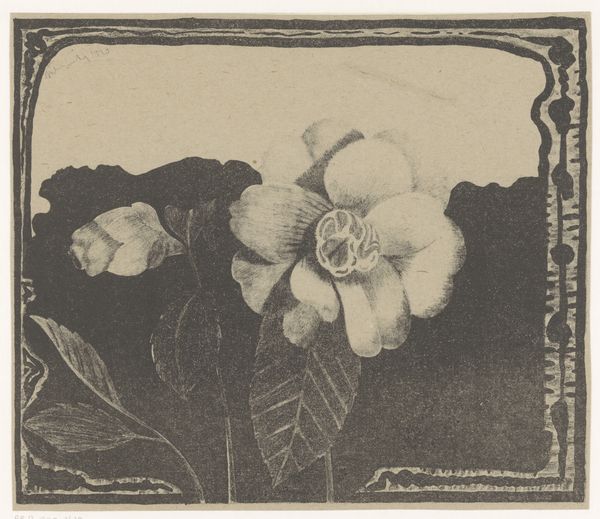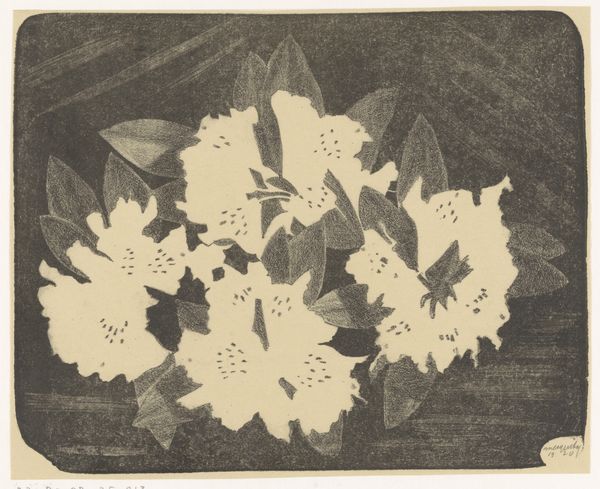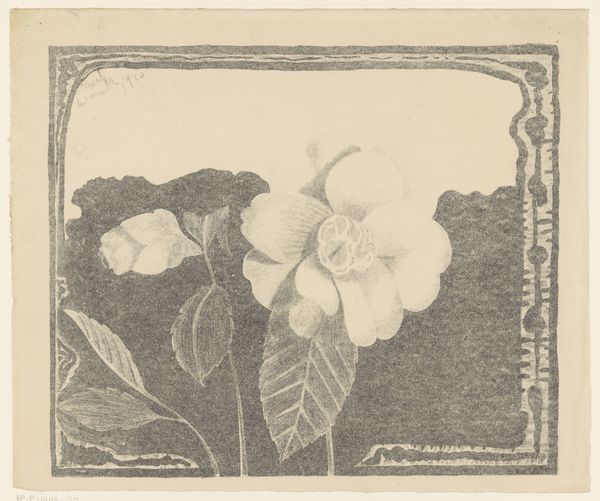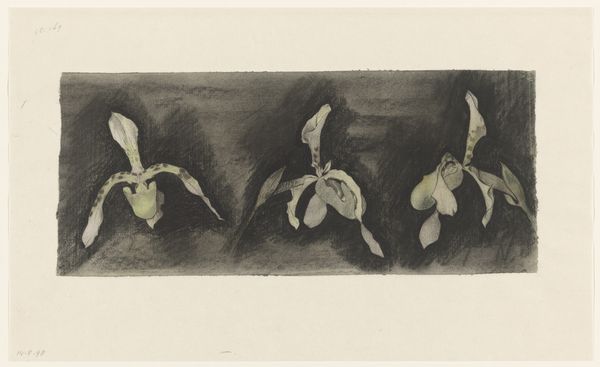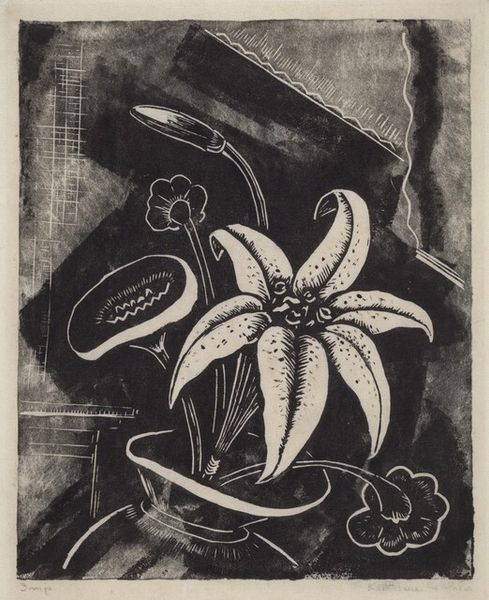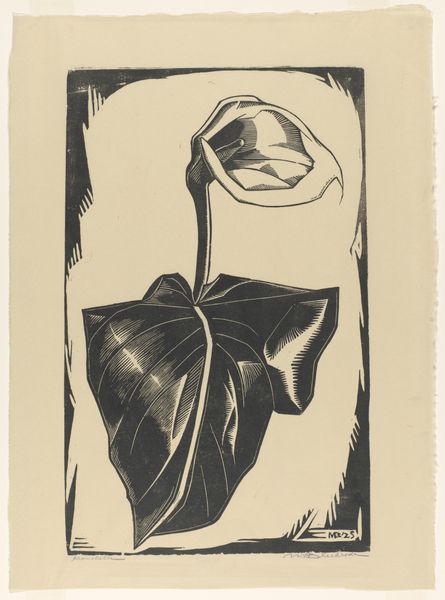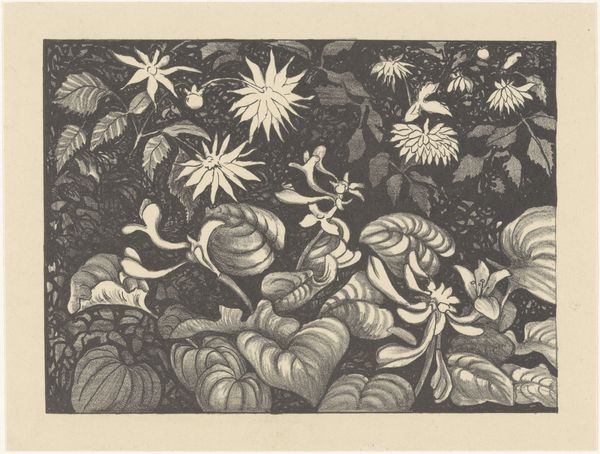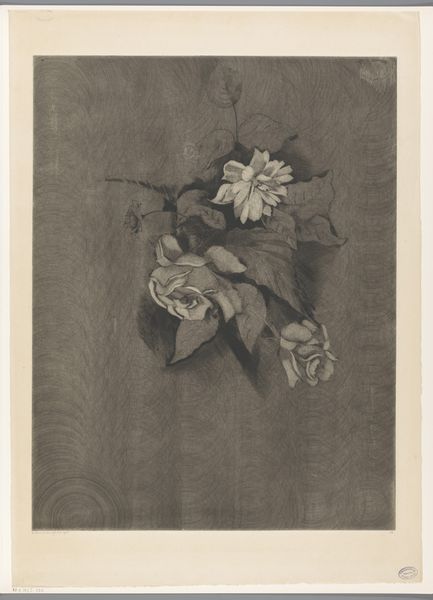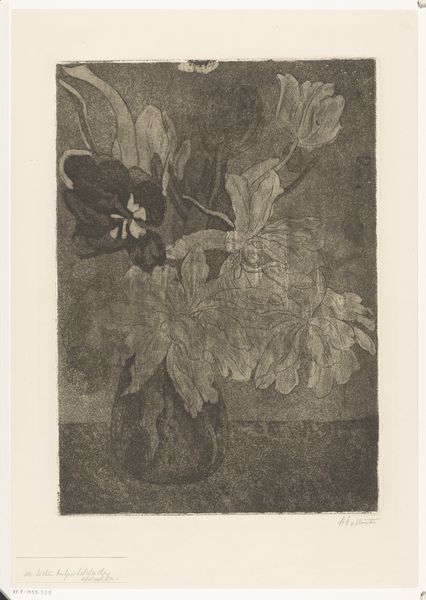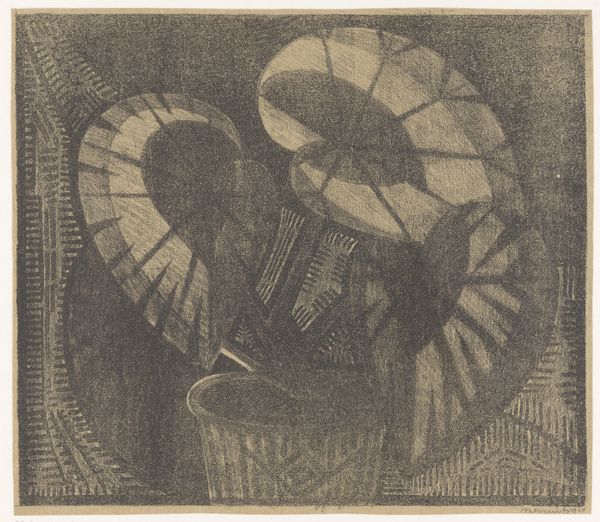
drawing, print
#
drawing
#
art-nouveau
# print
#
woodcut effect
#
flower
#
linocut print
#
pen-ink sketch
#
monochrome
Dimensions: height 197 mm, width 240 mm, height 187 mm, width 235 mm
Copyright: Rijks Museum: Open Domain
Curator: This is "Twee rozen," or "Two Roses," a print crafted around 1920 by Samuel Jessurun de Mesquita, currently residing at the Rijksmuseum. Editor: Striking! The high contrast creates a somber yet powerful visual. The roses almost appear as ghostly emblems, doesn’t it strike you? Curator: Indeed. De Mesquita was a Dutch artist whose work often explored the darker side of the human condition, an interest that deepened due to the widespread trauma caused by the First World War and, especially, the loss of his son in that conflict. This sense of loss echoes here. Considering his Jewish background, this premonition may reflect societal fractures that impacted the diaspora during that period, as well. Editor: The two roses certainly feel like potent symbols of fragility and resilience. Roses, throughout art history, typically embody love, beauty and passion, of course, yet the stark presentation here complicates such associations, doesn’t it? One is an open bloom, while the other is a closed bud, each one representing very different life-cycle connotations. Curator: I agree entirely. The choice of the linocut and woodcut print medium, mimicking that crude rendering aesthetic, also enhances the starkness. The dark, almost tribal patterning in the background adds another layer, creating a tense interplay with the traditional symbolism. Editor: Yes, there's something almost totemic about those graphic forms! Are they abstract references, or do they tie back to De Mesquita's cultural identity and history? Curator: It is probable. Art Nouveau—which has had such an impact here stylistically—often merged floral imagery with sociopolitical undertones, in addition to challenging industrial modes of output with its calligraphic look and feel, and De Mesquita has taken these two to heart. What resonates is the emotional charge embedded in these seemingly simple, monochrome forms. Editor: Ultimately, “Two Roses” feels profoundly introspective. It uses familiar iconography, but twists it, allowing us to glimpse the emotional intensity percolating below its aesthetic surface. A disquieting beauty. Curator: A poignant reflection of its era, distilled into the quiet language of flowers and the artist's cultural context, indeed. Thank you for the elucidation, editor.
Comments
No comments
Be the first to comment and join the conversation on the ultimate creative platform.
